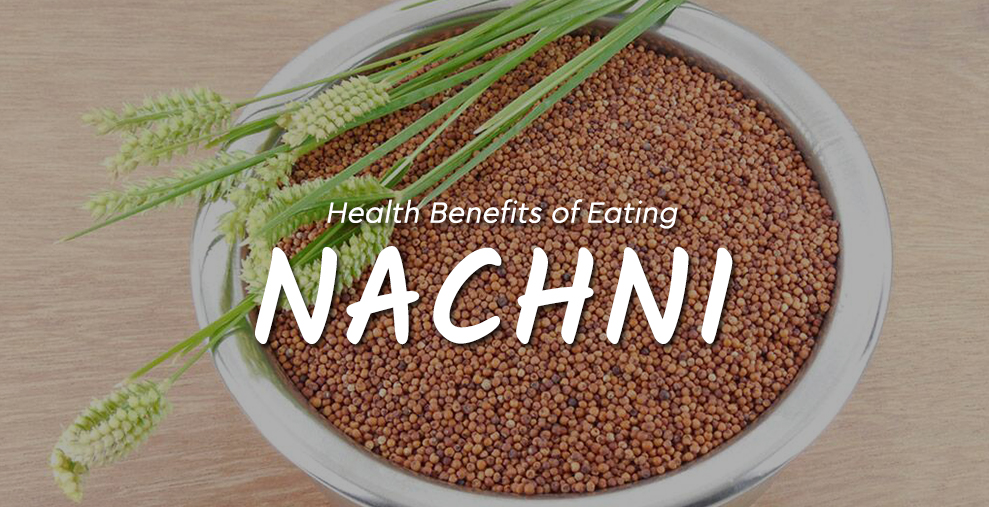Even though India is the highest producer of finger millet (ragi or nachni), contributing to about 58% of its global production, very few Indians know that nachni exist. If you’re among those who are unaware about the benefits of including nachni in your diet,keep reading
1. Helps in Controlling Diabetes

Help in controlling diabetes
The grain’s seed coat is abundant in polyphenols and dietary fibres as compared to rice, maize or wheat. The low glycemic index lessens food cravings and maintains the digestive pace, consequently, keeping blood sugar within the safe range. It is best to add it to your morning meal or have it for lunch in order to keep your system on track the whole day.
2. Battles Anemia

Battles anemia
Ragi is an excellent source of natural iron and thus a boon for anemic patients and also for those with low haemoglobin levels. Once ragi is allowed to sprout, the Vitamin C levels tend to increase and lead to easy absorption of iron into the bloodstream. For the optimum absorption of iron, you can consume it in the form of Ragi Dosa or Ragi Balls, with plenty of vegetables and a generous squeeze of lime or a bowl of tangy Sambar.
3. Relaxes the Body

Relaxes the body
Regular consumption of Ragi is highly beneficial in dealing with conditions of anxiety, depression and insomnia.The presence of antioxidants, mainly Tryptophan and amino acids, helps as they work as natural relaxants.
4. Helps in Weight Loss

Helps in weight loss
The high amount of dietary fibre combine keeps the stomach full for a longer and prevents unwanted cravings. This in turn leads to a minimised appetite and weight loss. Ragi flour lowers your blood sugar levels in the body by activating insulin. It is best consumed in the morning to make the most of its qualities and keep you full through the day.
5. Rich in calcium

Rich in calcium
No other cereal comes close to ragi when it comes to calcium content. Calcium is a significant factor when it comes to bone development and prevention of osteoporosis. Replacing calcium pills with a ragi kanji or porridge and including it in the diet of growing children is a good way to reap its benefits.
6. Regulates blood sugar levels

Regulates blood sugar levels
The high polyphenol and fibre content has another perk. Diabetic patients can trust ragi to create a restrained build in glucose level. Diets that regularly include ragi have been known to have lower glycemic response. This is mostly down to the inclusion of bran in ragi as the grain is too small to be polished and milled.
